The United States has thousands of natural lakes spread across the country. Some states like Texas may have only one, while others have hundreds. Maryland is the only state in the United States that has no natural lakes in its territory. This article will name and discuss the 15 largest natural lakes in the United States. Here’s a preview:

Artificial lakes such as those created with a dam or made with any other artificial method will not be on this list. Lakes are an important source of freshwater in the United States and house a variety of wildlife. You can find lakes of all sizes packaged with beautiful scenery to enjoy in the U.S. There are thousands of lakes in the U.S. to see, but let’s take a look at the 15 largest natural lakes in the United States.
15. Selawik Lake
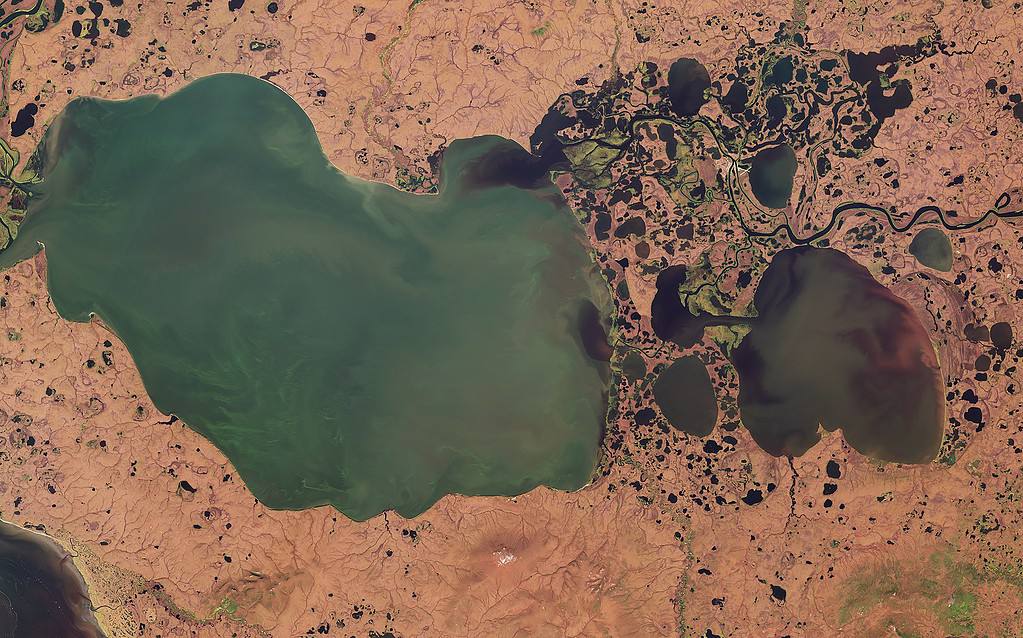
Selawik Lake is near the Pacific Ocean
©Contains modified Copernicus Sentinel data 2018, CC BY-SA 3.0 IGO, via Wikimedia Commons – License
Located in Alaska, Selawik Lake is the third largest lake in its state. This lake is named after the Alaskan city of Selawik, which is only 7 miles away from the lake. Selawik Lake is the third largest lake in the U.S. and is 31 miles long. Right next to the Selawik National Wildlife Refuge, the lake is an important source of freshwater for the wildlife nearby.
Selawik National Wildlife Refuge helps monitor wildlife and fish populations. Due to the large diversity of habitats in the surrounding area, many different types of animals live in or near Selawik Lake. Wildlife like migratory mammals, waterfowl, songbirds, shorebirds, and fishes depend on the lake and surrounding areas for food and shelter.
14. Red Lake
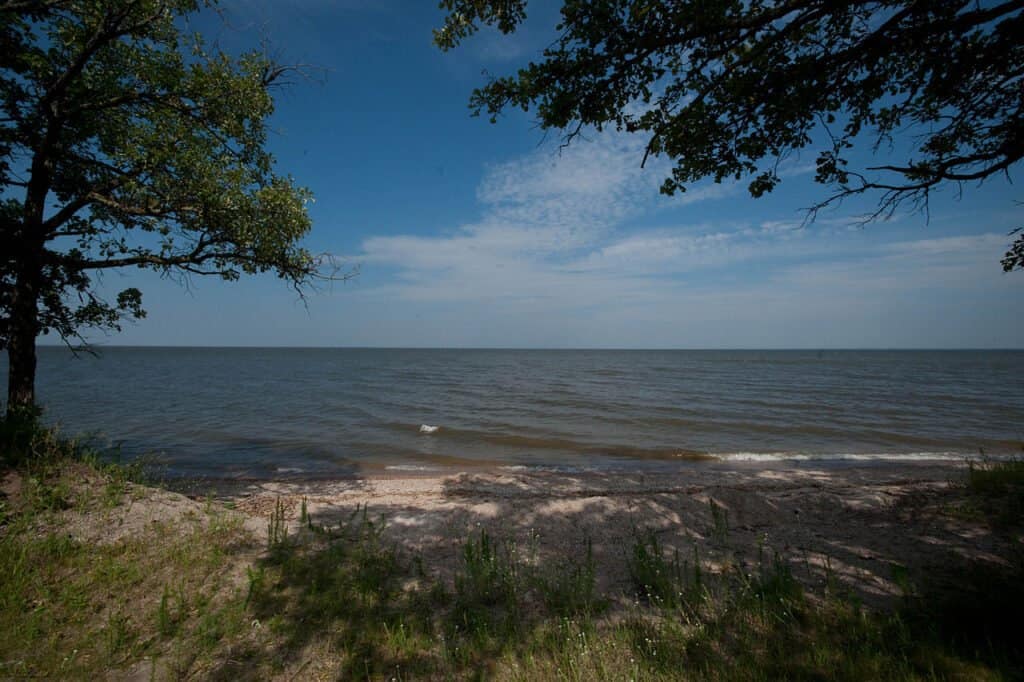
Red Lake’s name comes from a translation that suggests the water was red
©Andrew Filer / Creative Commons – License
Located in Minnesota, the Red Lake is one of the largest natural lakes. This lake is the 16th largest in the U.S., comprising two sections. One section of the lake is known as the upper section, while the other is known as the lower half, and it sits on the Red Lake Indian Reservation, with a total size of 444 square miles. The maximum depth of this lake is 35 feet, with an average depth of 15 feet. Species of fish like yellow perch, white sucker, walleye, pike, and sturgeon fill the lake’s waters.
13. Lake St. Clair
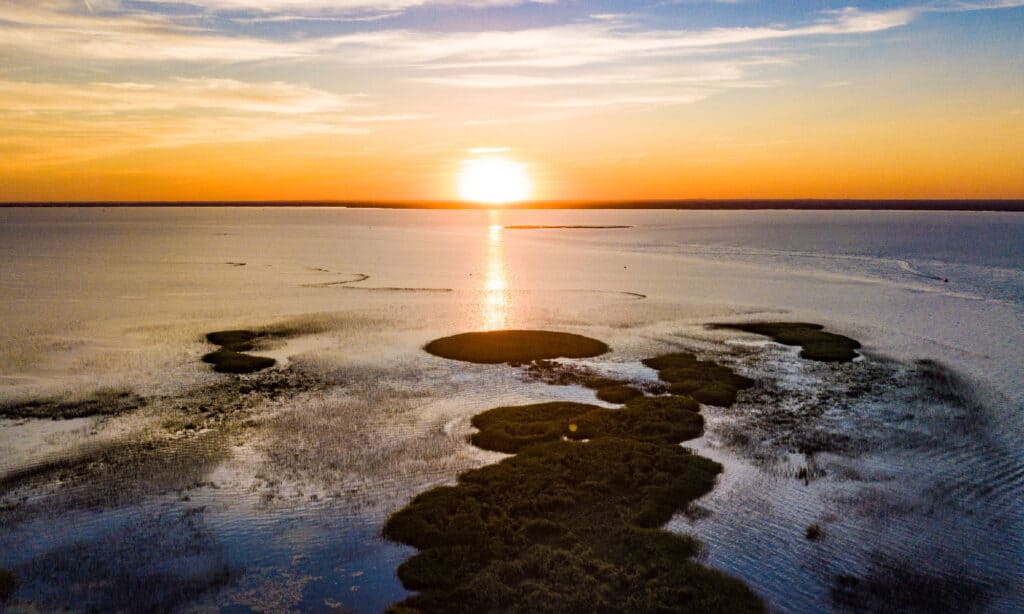
Lake St. Clair is often referred to as the heart of the great lakes and is one of the best places in Michigan to fish.
©iStock.com/Brian Sevald
While it may not be the largest lake in its area, Lake St. Clair is an important freshwater source, connecting the Great Lakes of Huron and Eire. The lake is 26 miles long and 24 wide and has an average depth of 11 feet. The lake lies within Michigan but also borders the Province of Ontario. Lake St. Clair is often referred to as the heart of the Great Lakes and is one of the best places in Michigan to fish.
Over 100 species of fish inhabit Lake St. Clair. The St. Clair Wildlife Area is important in maintaining populations of at-risk animals like eagles, foxes, turtles, owls, and much more.
12. Becharof Lake

Flooded with water, and sockeye salmon, massive Becharof is a highly desired destination for anglers.
©R.J. Wilk, U.S. Fish and Wildlife Service (US-FWS) / Public domain, from Wikimedia Commons, the free media repository – License
The Becharof Lake is the second largest lake in Alaska and is the 14th largest lake in the United States. This lake is 15 miles wide and 35 miles long, with a maximum depth of 600 feet. The U.S. purchased the lake in 1867 during the Alaskan purchase, and it was named after the Russian navigator Dmitry Bocharov, who was famous for sailing the area. Becharof Lake is a popular attraction for fishing and photographing wildlife such as seals, otters, eagles, and grizzly bears.
11. Lake Champlain
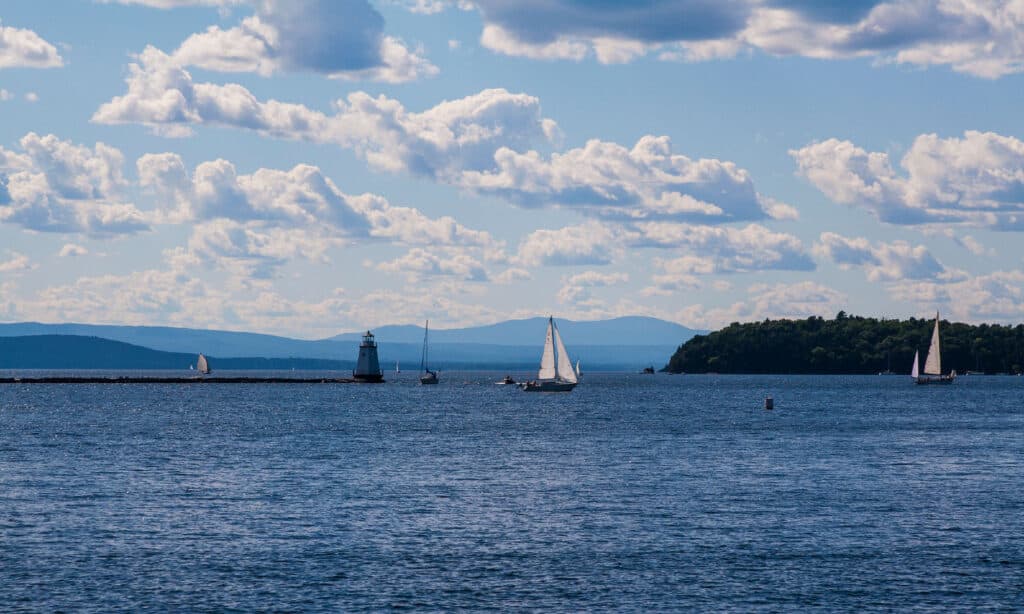
Sometimes referred to as ‘the sixth Great Lake, Lake Champlain measures approximately 107 miles long with a maximum width of 14 miles.
©Mark Castiglia/Shutterstock.com
Lake Champlain is mostly located between New York and Vermont, but a small portion crosses the border into the Canadian province of Quebec. Sometimes referred to as ‘the sixth Great Lake,’ Lake Champlain measures approximately 107 miles long with a maximum width of 14 miles. It is the thirteenth largest lake in the U.S. by area and has a maximum depth of 400ft.
Many species rely on the lake as a food source and a home, including 300 different species of bird and over 80 different species of fish. Pollution from agricultural and urban runoff has become a concern in recent decades. Despite pollution being a concern, the lake is still safe for swimming and is considered a world-class fishery for species like Lake trout and Atlantic salmon.
10. Lake Pontchartrain
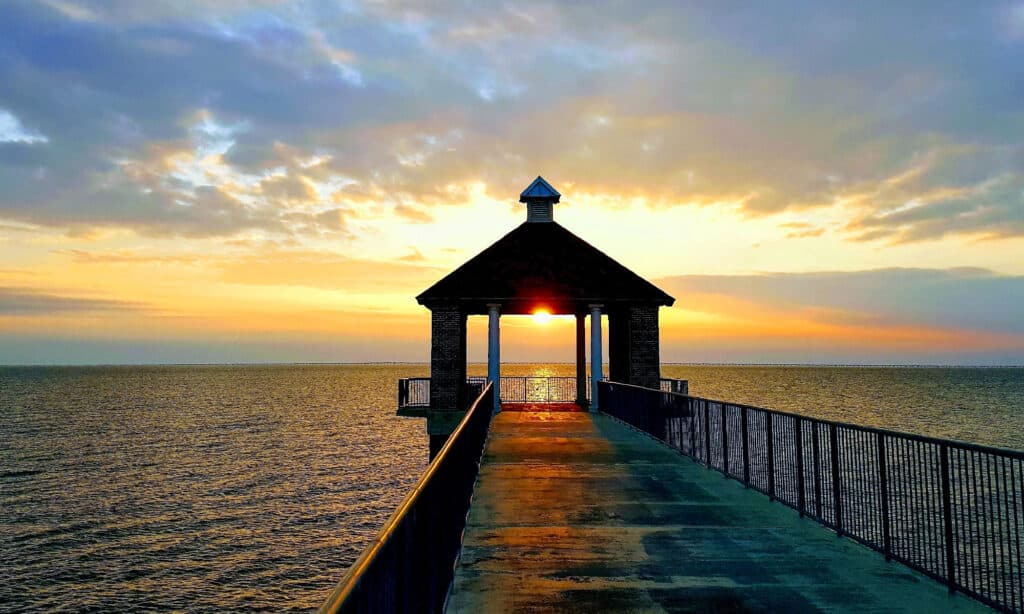
Lake Pontchartrain is the second-largest saltwater lake in the United States known for exceptional
catfish
and speckled trout fishing and the world’s longest continuous bridge
©iStock.com/Idylle Images
Located in southeastern Louisiana is a large estuary known as Lake Pontchartrain. It is the tenth-largest natural lake in the United States, measuring 40 miles long with a maximum width of 24 miles. It comprises more than 125,000 acres of wetland making it one of the largest wetlands along the Gulf Coast of North America.
The several habitats within the wetlands along the lake have been identified as needing conservation management. The large cypress swamps in the area were logged heavily in the 1900s, and many have not regrown. Currently, the United States Geological Survey is monitoring the environmental effects of various things, like pollution from urban areas and agriculture and saltwater intrusion from artificial waterways, to understand better what may be causing local species and habitats to decline.
9. Lake Okeechobee
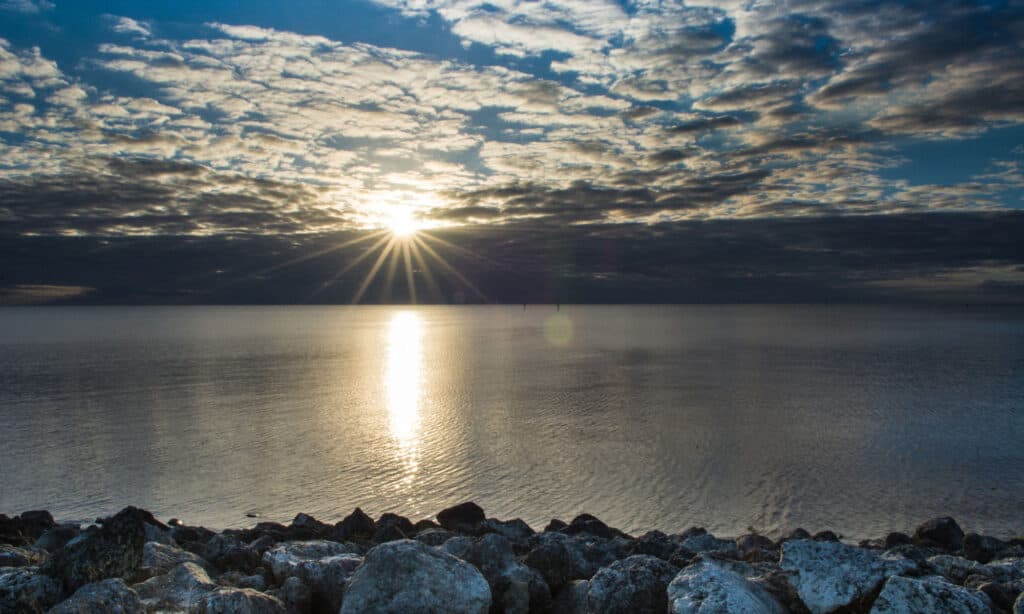
Found in Florida, Lake Okeechobee is the largest lake in its state.
©Allison Michael/Shutterstock.com
Lake Okeechobee, located in southern Florida, is the state’s largest freshwater lake. Also known as the Florida Inland Sea, Lake Okeechobee is 35 miles long with a maximum width of 29 miles.
Though it is shallow, Lake Okeechobee is home to a wide variety of flora and fauna, including more than 40 species of native fish and various species of wading birds. Some species native to the lake include largemouth bass, redear sunfish, egrets, ibises, wood storks, and herons. Previously this lake has been studied for its algal blooms, which can be dangerous to the local wildlife.
8. Iliamna Lake

Iliamna Lake is the 8th largest natural lake in the United States.
©Nessie91/Shutterstock.com
Iliamna Lake is in southern Alaska’s north end of the Alaska Peninsula. Measuring 77 miles in length and 22 miles in width, Iliamna Lake is the 8th largest natural lake in the United States. It is the third largest lake located completely in the U.S. and the 24th in all of North America.
Iliamna Lake is best known for its legends of a lake monster. The lake monster, also known as ‘Illie’ to some locals, is reported to be between 10 -30 feet long with a square-like head. It is speculated that ‘Illie’ is just a Pacific sleeper shark or a large white sturgeon. At one point, the Anchorage Daily News offered $100,000 to anyone who could provide concrete evidence of its existence.
7. Lake of the Woods
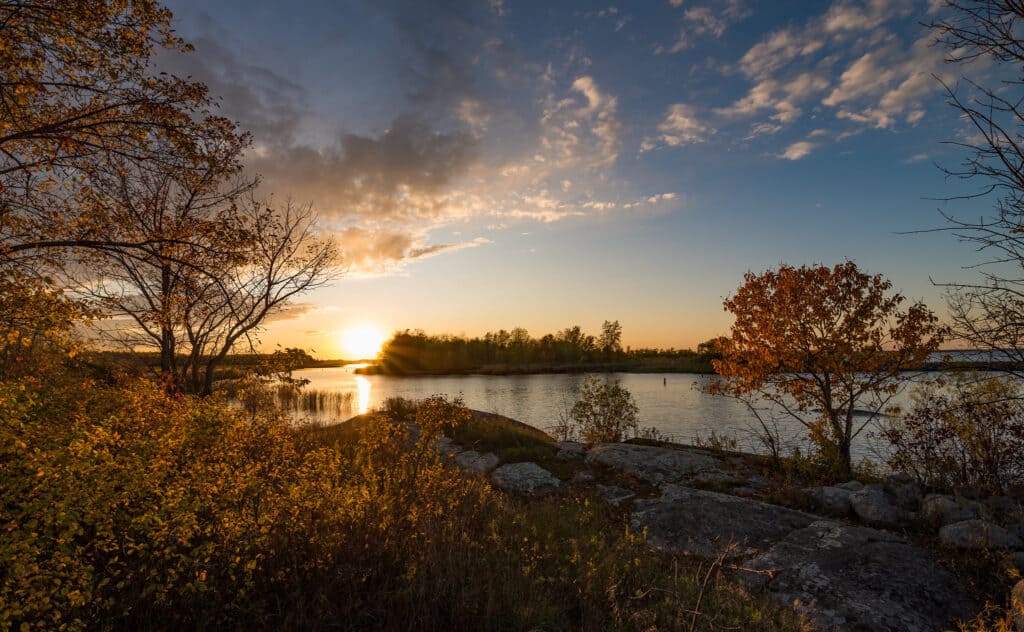
The islands within the lake provide nesting habitats for birds like the piping plover, American white
pelican
, and bald eagles.
©Tony Webster / CC BY-SA 2.0 – License
Occupying areas in both northern Minnesota and parts of the Canadian provinces of Ontario and Manitoba is Lake of the Woods. At number 7 on the list of largest natural lakes in the United States, the Lake of the Woods measures 68 miles long and 59 miles wide. It is the 36th-largest lake in the world by area and the sixth-largest freshwater lake in the U.S.
Lake of the Woods cuts off a portion of Minnesota from the rest of the U.S. This portion of the state is referred to as The Northwest Angle and can only be reached by crossing the lake or traveling through Canada. The islands within the lake provide nesting habitats for birds like the piping plover, American white pelican, and bald eagles.
6. Great Salt Lake

The Great Salt Lake has a maximum depth of 33 feet.
©iStock.com/beccarie
In northern Utah lies the Great Salt Lake. It is the largest saltwater lake in the Western Hemisphere. The lake is 75 miles long and about 35 miles wide, making it the 6th largest natural lake in the United States. It is fed by three major rivers and some minor streams that are all fed by the snow melt from the Uinta Mountain range in northeastern Utah.
The Great Salt Lake gets its name from the water’s high salinity due to the large amounts of minerals deposited into the water yearly. These mineral deposits occur because the Great Salt Lake has no water output besides evaporation. It is a remnant of the once great Lake Bonneville, a large body of water that once covered a large portion of western Utah.
5. Lake Ontario
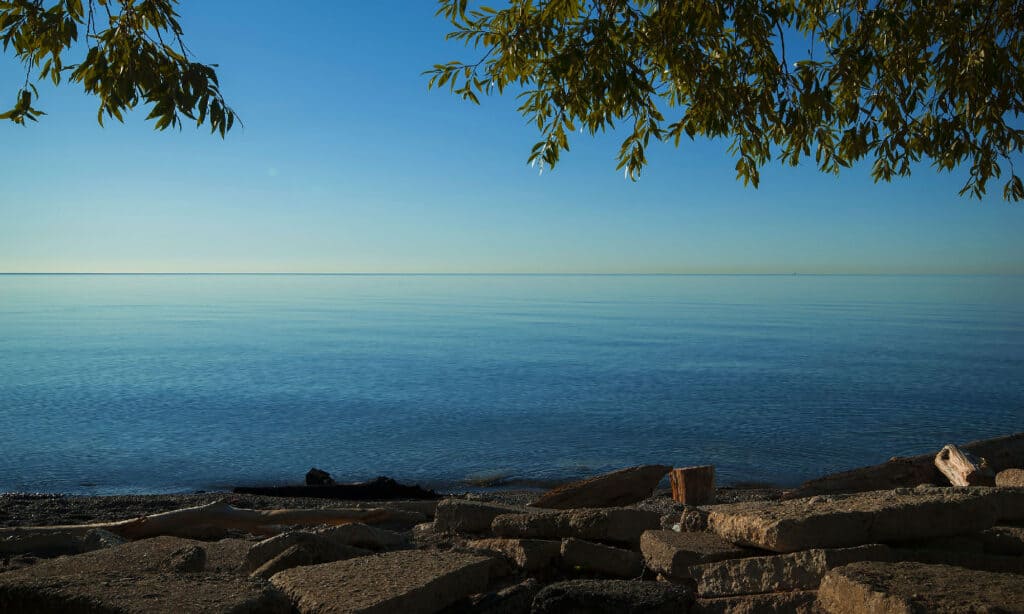
Lake Ontario is the smallest Great Lake
©Michael J. Eves/Shutterstock.com
Lake Ontario is the easternmost Great Lake, and its borders are shared by New York and the Canadian province of Ontario. Though it is the smallest Great Lake by surface area, it is the 13th largest lake in the world, measuring 193 miles long and 52 miles wide.
Sandbanks within Lake Ontario have created a vast number of lagoons and wetlands, and the shoreline and wetlands are regions of high biodiversity. Lake Ontario’s dunes, lagoons, and wetlands are crucial to many species of waterfowl, reptiles, amphibians, and plants. Some common wildlife in or near the lake include swans, loons, ducks, lake trout, whitefish, salmon, black bears, fox, and elk.
4. Lake Erie
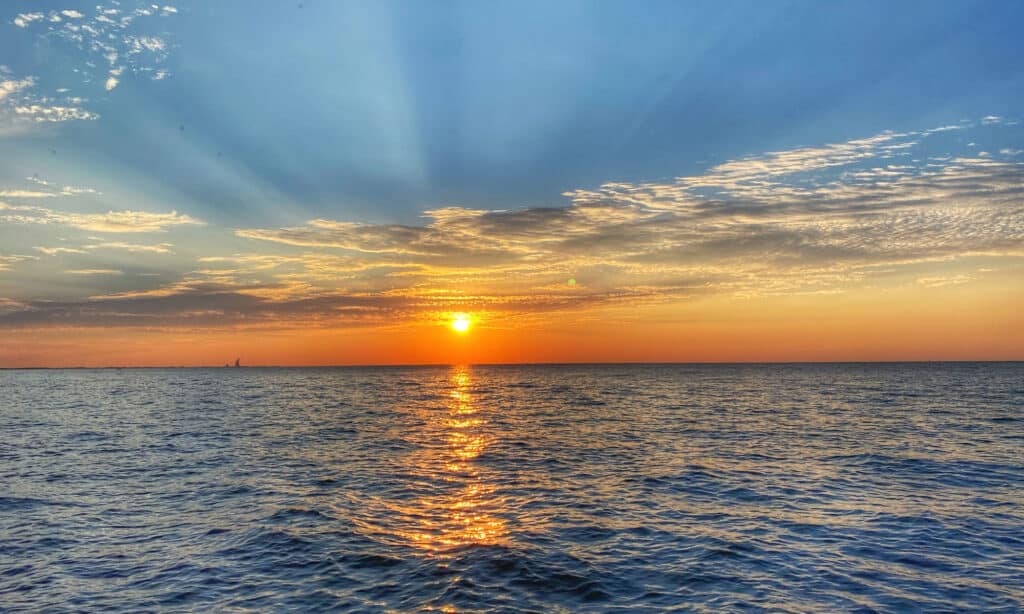
Due to human activity along the shores, Lake Erie became extremely polluted in the 1960s and 1970s.
©iStock.com/becky johnson
Bordering four U.S. states and Ontario, one of Canada’s thirteen provinces, Lake Erie is the fourth largest natural lake in the United States. Although the smallest of the Great Lakes by volume, Lake Erie is the 11th largest lake in the world, with a length of 241 miles and a width of 57 miles.
Lake Erie has two outflow sources, the main one being Niagara Falls. Due to the large number of tourists that visit Niagara Falls and Lake Erie yearly, local organizations have made efforts to conserve the wildlife. Due to human activity along the shores, Lake Erie became extremely polluted in the 1960s and 1970s. Invasive species have been accidentally introduced to the ecosystem, causing issues with fish and other marine life populations.
3. Lake Michigan

Lake Michigan is a massive body of water with over forty miles of shoreline in the state of Indiana
©iStock.com/Focqus, LLC
Lake Michigan is the second largest great lake by volume and the third-largest by surface area. The lake is 320 miles long and has a width of 118 miles making it the third-largest natural lake in the United States. Lake Michigan is the only one of the Great Lakes to be located entirely in the United States; the others share their borders with Canada. It is the largest lake in one country by surface area.
The shores of Lake Michigan are home to over 12 million people and 72 cities. National parks such as the Sleeping Bear Dunes National Lakeshore and Indiana Dunes National Park are found along shore stretches. Over 30 state parks are located on islands within the lake or along the shoreline.
2. Lake Huron
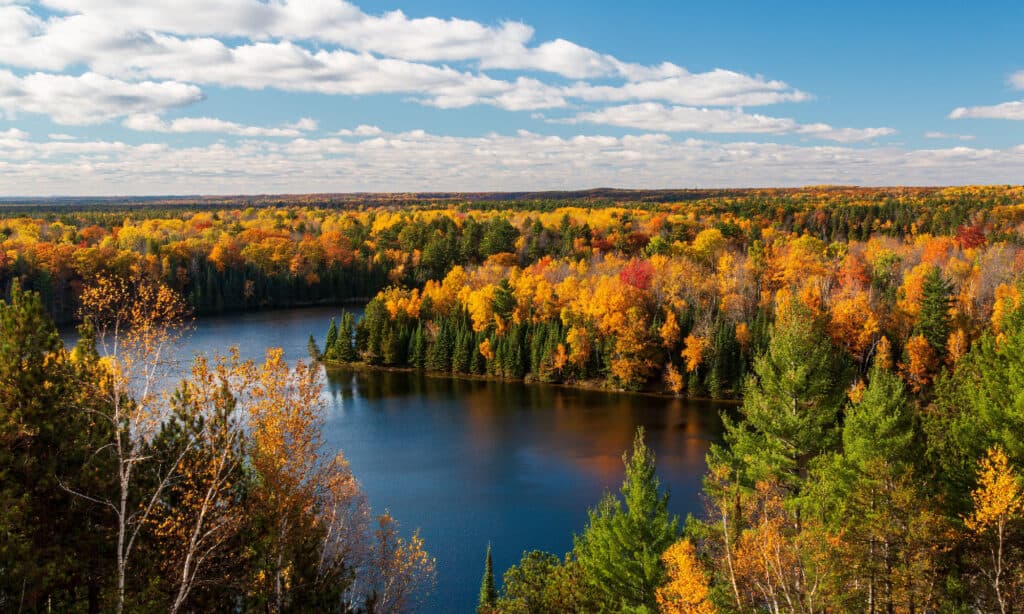
Lake Huron is the second largest of the Great Lakes and the third-largest freshwater lake in the entire world
©iStock.com/Paul Massie Photography
Lake Huron is one of the five Great Lakes in North America. The U.S. shares this lake with Ontario, which borders it on the north and east. This lake is 206 miles long with a width of 183 miles making it the second-largest natural lake in the United States.
Lake Huron has seen drastic changes to its ecosystem in the past century. The lake was once home to an abundance of native deepwater fish like lake trout. In the 1930s, invasive species like sea lamprey and rainbow smelt had become very abundant. Deepwater fish populations declined drastically through a mix of overfishing and invasive species. Because of this, Pacific Salmon and Lake Trout have been stocked in the lake since the 1960s.
1. Lake Superior
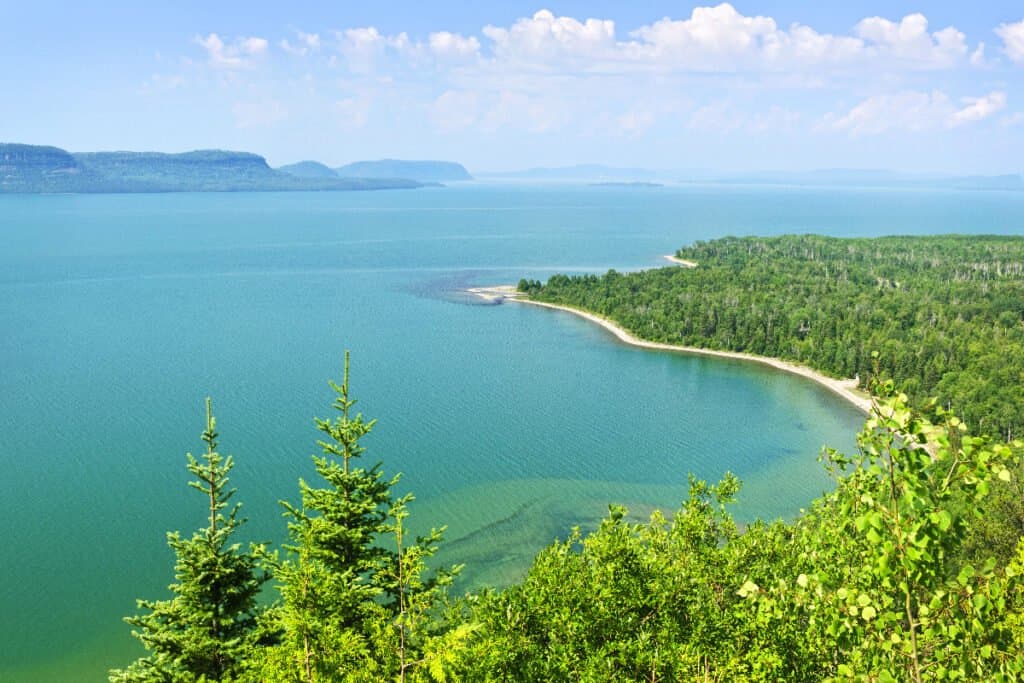
Lake Superior has 10% of the world’s surface freshwater
©Elena Elisseeva/Shutterstock.com
Lake Superior is the largest natural lake in the United States. It is 350 miles in length and 160 miles in width and is the world’s largest freshwater lake by surface area and the second largest by volume.
Over 80 species of fish make their home in Lake Superior, with around 20 being native. Some native species include the brook trout, lake sturgeon, longnose sucker, round whitefish, and yellow perch. Due to the accidental introduction of invasive species, fish populations have declined over the years.
Summary Of The 15 Largest Natural Lakes In The United States
| Rank | Lake | Size | Location |
|---|---|---|---|
| 15. | Selawik Lake | 31 miles long | Northwestern Alaska |
| 14. | Red Lake | 444 square miles | Red Lake Indian Reservation, Minnesota |
| 13. | Lake St. Clair | 26 miles long | Great Lakes, Michigan |
| 12. | Becharof Lake | 35 miles long | Southwestern Alaska |
| 11. | Lake Champlain | 107 miles long | Between New York, Vermont, and Quebec |
| 10. | Lake Pontchartrain | 40 miles long | Southeastern Louisiana |
| 9. | Lake Okeechobee | 35 miles long | South Florida |
| 8. | Iliamna Lake | 77 miles long | The north end of the Alaska Peninsula |
| 7. | Lake of the Woods | 68 miles long | Borders Minnesota, Ontario, and Manitoba |
| 6. | Great Salt Lake | 75 miles long | Northern Utah |
| 5. | Lake Ontario | 193 miles long | Borders New York & Ontario |
| 4. | Lake Erie | 241 miles long | Borders Michigan, Ohio, New York, Pennsylvania & Ontario |
| 3. | Lake Michigan | 320 miles long | Borders Illinois, Indiana, Michigan, and Wisconsin |
| 2. | Lake Huron | 206 miles long | Borders Michigan and Ontario |
| 1. | Lake Superior | 350 miles long | Borders Michigan, Minnesota, Wisconsin & Ontario |
The photo featured at the top of this post is © Tony Webster / CC BY-SA 2.0 – License / Original
Thank you for reading! Have some feedback for us? Contact the AZ Animals editorial team.






